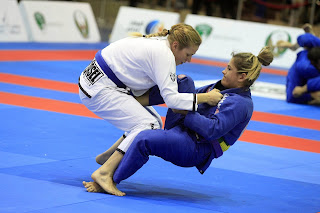By Liz
Why should I keep a jiujitsu journal?
A jiujitsu journal is a place where you can write down the techniques you learned that day, as well as record your physical state (“pain in right knee, very fatigued after 2 rolls, ate too much too close to training”) and general experiences during that training session (“felt great today, fun flow roll with Josh at the beginning, got smashed by Kayla during last roll”).
There are several good reasons to keep a journal devoted to jiujitsu:
- Keeping a jiujitsu journal encourages you to pay close attention during class: When you know you’re going to be writing down the techniques later, you are forced to pay attention to every detail--both while the coach is talking and while you are drilling the move. I’ve found that sometimes I space out while the coach is talking and sometimes even do the moves half-heartedly, just going through the motions without really paying attention to what I’m doing and ignoring the details. However, when I know I have to write down the techniques later, I pay close attention to what all four of my limbs are doing, where to put the pressure, when to change positions, how exactly to hold each grip, and how to transition through each move… because otherwise my notes will be crap later. This helps me get the most out of my training time.
- Keeping a jiujitsu journal encourages drilling before and after class: Sometimes I’m so tired after class that I head to the locker rooms right away without a second thought about what I learned that day. But when I know I have to write the techniques down later, I’ll stay after class and review the moves a few times with a willing partner for five minutes, and will often come back early the next day to drill the moves again.
- The process of writing helps you remember and creates a record for later: You will inevitably forget the details, and keeping a journal allows you to keep going back and drilling moves you learned weeks or months later, helping reinforce the muscle memory of various techniques into your brain.
How should I keep a jiujitsu journal?
Here are my tips for keeping the journal:
- Drill the moves you learned that day again after class is over, and make sure you have all the details correct and solid. Ask your coach to watch you do the move once to make sure you’re doing it correctly.
- Write it down as soon as you get home (or, even better, in the locker room) in as much detail as possible.
- Keep all of the entries in one place and organized by date, and give some details for who your partner was to help jog your memory when you look back on the entry later.
- Detail how you were feeling emotionally and physically that day. Some people also keep a food journal as well. This will help you pick up patterns. For awhile, I was feeling really weak during rolls. When I went back to review my notes, I noticed that in my notes, I was writing “feeling fatigued” during most of my entries. That prompted me to see a nutritionist, who informed me that I wasn’t eating enough. If I hadn’t kept that record, I think I would have thought I was just tired and not realized that it was a consistent trend that was affecting my training.
- Frequently review your notes. Go through them once at the end of the week, and again at the end of the month. This will help refresh your memory. This will also help you get better at writing them, because when you look back on your notes from the week before, you will realize the details you left out but need to include next time.
Keeping a jiujitsu journal helps keep you focused on technique and helps organize your thoughts. It also helps you keep track of your progress and any injuries or illness. Although it can take an extra 15 minutes of your time each day, it’s definitely worth it to keep you progressing through advanced moves.
Liz started jiujitsu in 2011, got her blue belt in 2013, and has competed in 11 competitions.
Like this post? Share it on Facebook. Love this blog? Subscribe or follow by email via the links in the top right column!
Email us at liz.meg223@gmail.com with your feedback or questions, and we will post our answers in the next blog post!
Email us at liz.meg223@gmail.com with your feedback or questions, and we will post our answers in the next blog post!


